Visión general de Fabricación aditiva por haz de electrones (EBAM)
Imagine poder construir piezas metálicas complejas capa a capa con una precisión increíble y un desperdicio mínimo. Parece sacado de una película de ciencia ficción, ¿verdad? Pues bienvenido al mundo de la fabricación aditiva por haz de electrones (EBAM). Esta tecnología de vanguardia utiliza un haz de electrones para fundir polvo o alambre metálico, creando objetos 3D con detalles intrincados y propiedades robustas.
La tecnología EBAM destaca en el panorama de la fabricación aditiva por su capacidad para producir componentes de alta calidad y resistencia, especialmente para aplicaciones aeroespaciales, médicas y de automoción. Veamos en detalle cómo funciona el EBAM, los tipos de polvos metálicos utilizados, sus propiedades y por qué esta tecnología está revolucionando la fabricación.
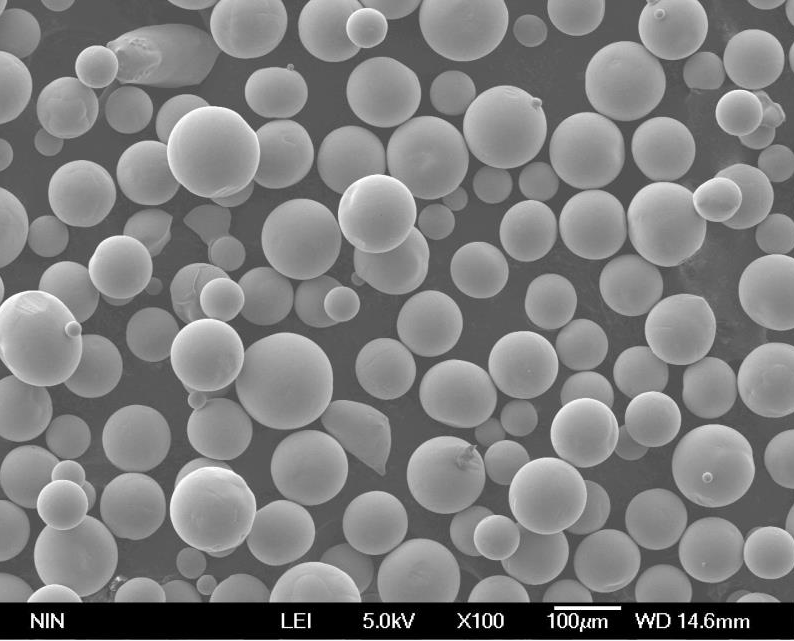
Tipos de polvos metálicos para EBAM
| Polvo metálico | Composición | Propiedades | Caracteristicas |
|---|---|---|---|
| Titanio (Ti-6Al-4V) | Ti, Al, V | Alta resistencia, resistente a la corrosión | Ligero, biocompatible |
| Inconel 718 | Ni, Cr, Fe, Nb, Mo | Resistencia a altas temperaturas, durabilidad | Ideal para la industria aeroespacial y las turbinas |
| Acero inoxidable (316L) | Fe, Cr, Ni, Mo | Resistencia a la corrosión, alta resistencia | Común en las industrias médica y alimentaria |
| Aluminio (AlSi10Mg) | Al, Si, Mg | Ligero, buenas propiedades térmicas | Utilizado en automoción y aeroespacial |
| Cromo-cobalto (CoCr) | Co, Cr, Mo | Resistente al desgaste, alta resistencia | Popular en implantes médicos |
| Acero para herramientas (H13) | Fe, Cr, Mo, V | Gran tenacidad, resistencia al desgaste | Se utiliza en herramientas y moldes |
| Aleación de níquel (Hastelloy X) | Ni, Cr, Fe, Mo | Resistente a la oxidación y a la corrosión | Utilizado en las industrias química y aeroespacial |
| Cobre (Cu) | Cu | Excelente conductividad, ductilidad | Se utiliza en aplicaciones eléctricas y térmicas |
| Titanio (CP-Ti) | Ti | Elevada relación resistencia/peso, resistente a la corrosión | Utilizado en la industria aeroespacial y médica |
| Acero martensítico envejecido (18Ni300) | Fe, Ni, Co, Mo | Alta resistencia, tenacidad | Utilizado en el sector aeroespacial y en utillaje |
Composición de Fabricación aditiva por haz de electrones (EBAM)
La magia del EBAM reside en sus materiales y su composición. Los materiales más utilizados son polvos metálicos o alambres, cada uno de ellos elegido por sus propiedades específicas que se adaptan a diversas aplicaciones industriales. Veamos algunos de los polvos metálicos más utilizados en el EBAM:
- Titanio (Ti-6Al-4V): Mezcla de titanio, aluminio y vanadio, esta aleación ofrece gran resistencia, ligereza y una excelente resistencia a la corrosión. Su biocompatibilidad la hace especialmente adecuada para implantes médicos y aeroespaciales.
- Inconel 718: Compuesto de níquel, cromo, hierro, niobio y molibdeno, el Inconel 718 es conocido por su resistencia a altas temperaturas y su durabilidad, lo que lo hace perfecto para motores de turbina y otras aplicaciones aeroespaciales.
- Acero inoxidable (316L): Esta aleación a base de hierro, con cromo, níquel y molibdeno, es célebre por su resistencia a la corrosión y su gran solidez, lo que la hace ideal para dispositivos médicos y equipos de la industria alimentaria.
- Aluminio (AlSi10Mg): Con una composición de aluminio, silicio y magnesio, esta aleación es ligera y tiene buenas propiedades térmicas, lo que la convierte en una de las favoritas de los sectores automovilístico y aeroespacial.
- Cromo-cobalto (CoCr): El CoCr, una aleación de cobalto, cromo y molibdeno, es resistente al desgaste y muy fuerte, por lo que suele utilizarse en implantes médicos.
- Acero para herramientas (H13): Esta aleación de acero contiene hierro, cromo, molibdeno y vanadio, es conocida por su gran tenacidad y resistencia al desgaste, y se utiliza en la fabricación de moldes y herramientas.
- Aleación de níquel (Hastelloy X): Compuesta de níquel, cromo, hierro y molibdeno, esta aleación es resistente a la oxidación y la corrosión, y se utiliza mucho en la industria química y aeroespacial.
- Cobre (Cu): El cobre puro es conocido por su excelente conductividad eléctrica y térmica, utilizada en diversas aplicaciones eléctricas y de intercambio de calor.
- Titanio (CP-Ti): El titanio comercialmente puro ofrece una elevada relación resistencia-peso y una excelente resistencia a la corrosión, por lo que resulta adecuado para aplicaciones aeroespaciales y médicas.
- Acero martensítico envejecido (18Ni300): Esta aleación de acero, compuesta por hierro, níquel, cobalto y molibdeno, proporciona una gran resistencia y tenacidad, ideal para aplicaciones aeroespaciales y de utillaje.
Características de la fabricación aditiva por haz de electrones (EBAM)
EBAM no se limita a fundir metales, sino que es sinónimo de precisión, eficacia y calidad. A continuación se detallan las características que distinguen a EBAM:
- Precisión: EBAM puede producir diseños intrincados con tolerancias estrechas, esenciales para componentes de alto rendimiento en los campos aeroespacial y médico.
- Eficiencia: Mediante un haz de electrones, la EBAM puede fundir rápidamente polvos o alambres metálicos, lo que acelera considerablemente el proceso de fabricación en comparación con los métodos tradicionales.
- Versatilidad: El EBAM es compatible con una amplia gama de metales y aleaciones, desde el aluminio ligero hasta el titanio superresistente y el Inconel resistente al calor.
- Resistencia y durabilidad: Las piezas fabricadas con EBAM presentan excelentes propiedades mecánicas, que a menudo superan a las realizadas con técnicas de fabricación convencionales.
- Residuos mínimos: EBAM es un proceso aditivo, lo que significa que construye las piezas capa por capa, utilizando sólo el material necesario, lo que minimiza los residuos y reduce los costes.
- Escalabilidad: Tanto si se trata de la producción de un único prototipo como de la fabricación a gran escala, EBAM ofrece escalabilidad para satisfacer diversas necesidades de producción.
- Personalización: El EBAM permite personalizar fácilmente las piezas, por lo que resulta ideal para crear componentes a medida adaptados a requisitos específicos.

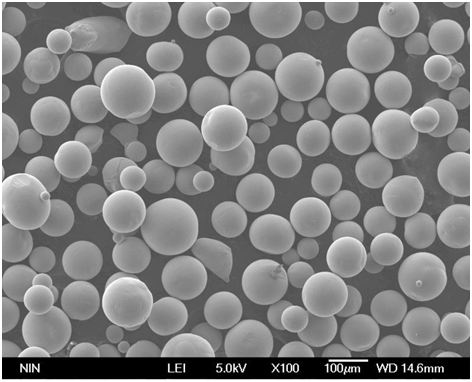

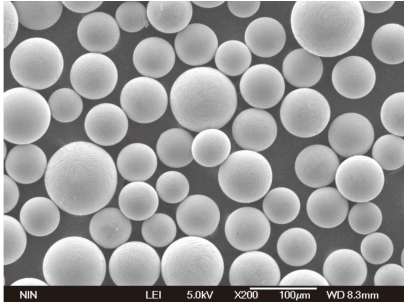
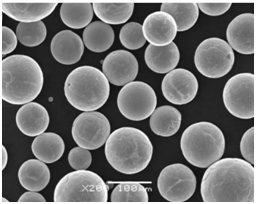
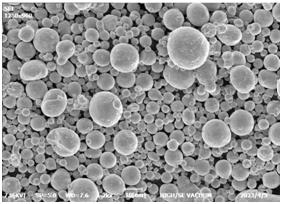
Ventajas de la fabricación aditiva por haz de electrones (EBAM)
¿Por qué debería considerar EBAM para sus necesidades de fabricación? He aquí algunas razones de peso:
- Flexibilidad de diseño: EBAM permite geometrías complejas que a menudo son imposibles con los métodos de fabricación tradicionales. Piense en intrincadas estructuras reticulares o canales internos que mejoran la funcionalidad sin añadir peso.
- Eficiencia del material: Dado que la EBAM utiliza únicamente la cantidad de material necesaria, reduce drásticamente los residuos, lo que la convierte en una opción más sostenible en comparación con los procesos de fabricación sustractivos.
- Prototipos rentables: Con EBAM, la creación de prototipos es más rápida y barata, lo que permite una iteración e innovación más rápidas sin los elevados costes de utillajes y moldes.
- Propiedades mecánicas mejoradas: Las piezas producidas mediante EBAM suelen presentar propiedades mecánicas superiores debido a la microestructura fina conseguida mediante el proceso de enfriamiento rápido.
- Altas tasas de deposición: La tecnología EBAM puede alcanzar elevados índices de deposición, lo que se traduce en tiempos de producción más rápidos, algo crucial para las industrias que requieren plazos de entrega rápidos.
- Plazos de entrega reducidos: Al eliminar la necesidad de grandes utillajes y permitir una producción rápida, EBAM reduce significativamente los plazos de entrega, ayudando a las empresas a lanzar sus productos al mercado con mayor rapidez.
Aplicaciones de la fabricación aditiva por haz de electrones (EBAM)
La versatilidad y precisión del EBAM abren un amplio abanico de aplicaciones en diversos sectores. Exploremos algunas áreas clave en las que el EBAM está teniendo un impacto significativo:
| Industria | Solicitud | Beneficios |
|---|---|---|
| Aeroespacial | Componentes del motor, piezas estructurales | Ligereza, alta resistencia, flexibilidad de diseño |
| Automotor | Piezas a medida, componentes ligeros | Menor peso, mayor rendimiento |
| Médico | Implantes, prótesis, instrumental quirúrgico | Biocompatibilidad, personalización |
| Energía | Álabes de turbina, intercambiadores de calor | Resistencia a altas temperaturas, eficiencia |
| Herramientas | Moldes, matrices, herramientas a medida | Durabilidad, precisión y plazos de entrega reducidos |
| Electrónica | Disipadores de calor, piezas conductoras | Excelente conductividad térmica y eléctrica |
| Defensa | Componentes de armas, blindaje ligero | Resistencia, durabilidad y ligereza |
Especificaciones, tamaños, calidades y normas de los materiales EBAM
Cuando se trata de EBAM, comprender las especificaciones, tamaños, grados y normas de los materiales es crucial para garantizar el rendimiento y la calidad deseados. He aquí una tabla exhaustiva para guiarle:
| Material | Especificaciones | Tallas | Los grados | Normas |
|---|---|---|---|---|
| Titanio (Ti-6Al-4V) | ASTM B348, AMS 4928 | 10-45 µm | 5º curso | ASTM F2924, AMS 4998 |
| Inconel 718 | ASTM B637, AMS 5662 | 15-53 µm | – | AMS 5663, ASTM F3055 |
| Acero inoxidable (316L) | ASTM A276, AMS 5653 | 15-45 µm | – | ASTM F138, ASTM F799 |
| Aluminio (AlSi10Mg) | DIN EN 1706 | 20-63 µm | – | ISO 3522 |
| Cromo-cobalto (CoCr) | ASTM F75, ISO 5832-4 | 15-45 µm | – | ASTM F1537 |
| Acero para herramientas (H13) | ASTM A681, AMS 6487 | 15-53 µm | – | ASTM A681 |
| Aleación de níquel (Hastelloy X) | ASTM B435, AMS 5754 | 15-45 µm | – | AMS 5536, ASTM B619 |
| Cobre (Cu) | ASTM B170, ASTM B224 | 15-45 µm | ASTM F68 | |
| Titanio (CP-Ti) | ASTM B348, ASTM F67 | 10-45 µm | Grado 1, Grado 2 | AMS 4900, ASTM F1580 |
| Acero martensítico envejecido (18Ni300) | ASTM A538, AMS 6521 | 15-45 µm | AMS 6514, ASTM A538 |
Proveedores y precios de los materiales EBAM
Encontrar el proveedor adecuado es crucial para garantizar la calidad y consistencia de los materiales EBAM. He aquí una lista de algunos proveedores de renombre, junto con información sobre precios:
| Proveedor | Material | Precio (por kg) | Póngase en contacto con |
|---|---|---|---|
| Tecnología Carpenter | Titanio (Ti-6Al-4V) | $250 – $300 | www.carpentertechnology.com |
| Sandvik | Inconel 718 | $400 – $450 | www.materials.sandvik |
| Tecnologías de superficie Praxair | Acero inoxidable (316L) | $150 – $200 | www.praxairsurfacetechnologies.com |
| Tecnología LPW | Aluminio (AlSi10Mg) | $100 – $150 | www.lpwtechnology.com |
| Arcam AB | Cromo-cobalto (CoCr) | $350 – $400 | www.arcam.com |
| Höganäs | Acero para herramientas (H13) | $180 – $220 | www.hoganas.com |
| Haynes Internacional | Aleación de níquel (Hastelloy X) | $500 – $550 | www.haynesintl.com |
| Elementos americanos | Cobre (Cu) | $50 – $100 | www.americanelements.com |
| Centro de tratamiento del titanio | Titanio (CP-Ti) | $200 – $250 | www.titaniumprocessingcenter.com |
| Renishaw | Acero martensítico envejecido (18Ni300) | $300 – $350 | www.renishaw.com |
Pros y contras de Fabricación aditiva por haz de electrones (EBAM)
Como cualquier tecnología, la EBAM presenta una serie de ventajas y limitaciones. He aquí una comparativa:
| Ventajas | Desventajas |
|---|---|
| Alta precisión y exactitud | Elevado coste de instalación inicial |
| Reducción de los residuos de material | Requiere conocimientos y formación especializados |
| Capacidad para producir geometrías complejas | Opciones de material limitadas en comparación con otros métodos |
| Tiempos de producción más rápidos | Alto consumo de energía |
| Productos finales resistentes y duraderos | Tamaño de construcción limitado |
| Personalización y flexibilidad | A menudo es necesario el postprocesado |
| Altas tasas de deposición | El acabado de la superficie puede requerir trabajos adicionales |

Preguntas más frecuentes
| Pregunta | Respuesta |
|---|---|
| ¿Qué es EBAM? | EBAM es un proceso de impresión 3D que utiliza un haz de electrones para fundir polvo o alambre metálico y construir piezas capa a capa. |
| ¿En qué se diferencia EBAM de otros métodos de fabricación aditiva? | El EBAM utiliza un haz de electrones que ofrece una gran precisión y la posibilidad de trabajar con materiales a alta temperatura. |
| ¿Qué materiales pueden utilizarse en EBAM? | Los materiales más comunes son las aleaciones de titanio, el Inconel, el acero inoxidable, las aleaciones de aluminio y el cobalto-cromo. |
| ¿Cuáles son las principales aplicaciones del EBAM? | La EBAM se utiliza en las industrias aeroespacial, automovilística, médica, energética, de herramientas, electrónica y de defensa. |
| ¿Es rentable el EBAM? | Aunque el EBAM tiene unos costes iniciales elevados, reduce el desperdicio de material y el tiempo de producción, lo que supone un ahorro de costes a largo plazo. |
| ¿Cuáles son las limitaciones del EBAM? | La EBAM requiere equipos y conocimientos especializados, tiene un alto consumo de energía y está limitada por el tamaño de la construcción. |
| ¿Cómo garantiza EBAM la calidad de las piezas? | El EBAM proporciona una gran precisión, pero puede ser necesario un tratamiento posterior para el acabado de la superficie y la obtención de las propiedades deseadas. |
| ¿Puede utilizarse el EBAM para la producción en serie? | Sí, EBAM es escalable y puede utilizarse tanto para la creación de prototipos como para la producción en serie, en función de la aplicación. |
| ¿Cuáles son los beneficios medioambientales de la EBAM? | EBAM produce un mínimo de residuos y utiliza los materiales de forma eficiente, contribuyendo así a unas prácticas de fabricación más sostenibles. |
| ¿Cómo elegir el material adecuado para la EBAM? | La elección del material depende de las propiedades requeridas y de la aplicación. Consultar a proveedores y expertos puede ayudar a tomar la decisión correcta. |

